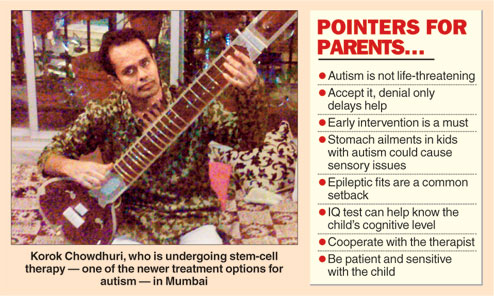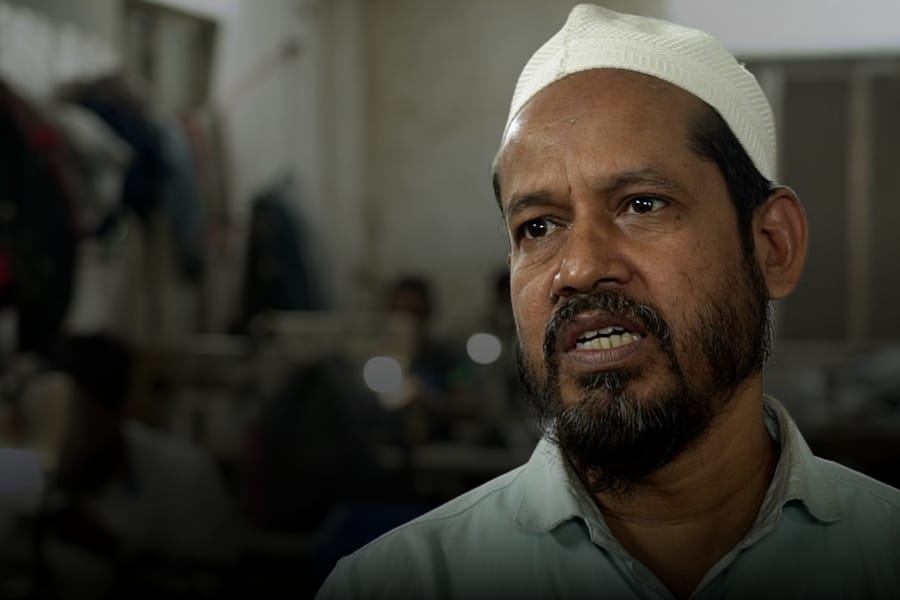 |
When he was 18 months old Stephen Shore received a regressive autism diagnosis, became non-verbal and was deemed “too sick” to be treated in an outpatient facility. Today he has obtained his postgraduate degree and has become an assistant professor in special education at Adelphi University, New York.
When Shore was asked his name he replied: “My name is Autism. I have autism, which causes me to believe in unexpected ways.” Autism is a condition that is not life-threatening. It is also not contagious. Autism is a neuro-developmental condition that delays normal milestones of development. Individuals with autism lack the ability to communicate, have impaired social skills and learning disabilities all of which result in developmental delay. There is a regression of learnt skills around the age of two to two-and-a-half years of age. Usually communication starts breaking between the child and the parents.
According to Rita Jordon, a parent and senior lecturer in autism studies at the School of Education, The University of Birmingham, and an expert on autism: “Research in autism is vast and expanding. Autism has a number of different diagnostic categories in medical terms describing the commonality of all those diagnoses. The aim is to arrive at a ‘practice’ definition of autism, which will refer to conditions that require specific customised treatment approaches in both lifetime education and care.”
This article outlines a few concepts key to understanding the condition and suggests a few therapeutic measures.
Neuroplasticity
To understand what autism is, we first need to understand how our brain works. The brain is a complex organ that synthesises our perception, understanding and our place in the world. Neuroplasticity refers to the brain’s ability to change. It is greater when a person is young; however, the brain remains plastic to some extent throughout life. The same holds true for people with autism. Neuroplasticity, in other words, is the ability of the nervous system to adapt its structural organisation to new situations emerging from changes of brain development and neuro-maturation. The brain can change physiologically and functionally as a result of stimulation.
According to latest research, we can harness the brain’s changeable characteristics, its neuroplasticity, to create programmes and stimuli for learning disabilities and autism. A stimulating environment will make learning possible and force the brain to work harder. It is necessary for school curricula to develop programmes for cognitive exercises and create a cognitive environment where this unique feature of the brain can be properly leveraged for the child’s development.
Physiological issues
While dealing with cognitive issues which are an important part of tackling autism, there are also physiological problems that need to be attended to. Problems of the gut are very prevalent in children with autism. Parents often overlook the stomach ailments that children with autism suffer. These could include:
l Chronic stomach upsets because of irregular bowel movement and acidity. This aggravates the sensory issues.
l Vitamin deficiencies like of Vitamin D and C.
l Inadequate absorption of minerals like zinc, magnesium because of which the child becomes irritable at night, disturbing sleep patterns and making the child hypersensitive, angry and anxious.
l Other symptoms of physical discomfort are joint pain, itchiness, colic pain, headaches and indigestion.
It is not uncommon for all these symptoms to occur together. That is why we can sometimes find children with autism display irritability. But even an adult dealing with so much would be irritable!
Epileptic fits are a common setback for children with autism. The child needs to undergo medication for a long duration. A bout of epilepsy puts back learning and it takes time for the child and the therapist to get back to the same stage of development before the attack. Post an epileptic attack parents and therapist need to be even more patient and sensitive.
Children with autism also suffer from sensory instability. Sensory integrative dysfunction is a disorder in which sensory input from all five senses is affected. In autism, the vestibular and proprioception senses are also affected. These affect our sense of balance and our sense to compute our position in the space (immediate environment). Sensory therapy like physical exercise or sensory stimulation is an obvious choice to calm the child down.
At times the child does not cooperate with therapy and the doctor may prescribe anti-psychotic drugs. As soon as his body gets adjusted to the medicine the child will take the therapy and his condition change for the positive.
Diets can play a role in alleviating some of these manifestations. The diet should have little sugar and foods with minimum preservatives and emulsifiers. Ghee and butter are to be avoided. Milk, though a dietary possibility, should be given after an allergy and gluten and casein free tolerance test. But diet control also does not provide full relief for intestinal inflammation that aggravates sensory issues.
Stem cell therapy
Stem cell therapy could help with the required oxygen in the brain and gut to keep autism-specific complexities under control. Brain cells need constant oxygen supply. It is, however, still rare in treating Autism Spectrum Disorder.
One of my adult students with autism has undertaken the therapy in Mumbai and is waiting for his follow-up session after six months. I have yet to detect much difference in his behaviour. Of course, one reason could be his age where the therapy is less effective. The efficacy of stem cell therapy has still to be fully ascertained. This treatment is only available in Mumbai and Pune.
Hyperbaric Oxygen Therapy
This is a new therapy in which a person with autism receives oxygen supply directly to the brain. The therapy involves a longish chamber-like container into which the person goes in and the doctor controls the oxygen supply from the control panel outside. The best thing about the therapy is that the child remains calm inside the chamber instead of getting anxious. Parents can be inside the chamber or seen outside through a transparent wall of the chamber, helping the child feel safe. However, one sitting is not enough and hence this becomes expensive. Currently this treatment is offered in Mumbai and Pune. It is not very popular in India because the US Food and Drug Administration hasn’t approved it yet. Some parents have tried it and claimed results but once again results are not conclusive.
Other issues
Never overlook or deny a situation where the child’s development is not following normal developmental milestones. Parents can identify traits of autism early but they seek comfort by remaining in denial. The sooner the intervention with a multidisciplinary team the better it is for the child to react positively.
The treatment should accommodate structured programmes. Sensory and occupational therapy need to be included for treatment. Once unsolicited behaviour is under control parents should also conduct an IQ test of the child. The result of the test provides parents the knowledge of the cognitive level of the child. Once autism is identified the correct response on the part of the therapist is: “The child will not grow out of it. It remains a lifelong challenge for those identified with it. But there are ways to deal with it”.
Parents require forbearance to deal with such a pronouncement but they also need to accept it for the sake of the child. They need to understand that diseases are cured through medication. But autism is not a disease. The pathology of autism is complicated and the findings are based on intensive scientific research.
The two most important points are that parents have to learn to trust the therapist when she/he explains their child will be near “normal” but not “normal”. And therapists need to be as patient when dealing with parents as with the children.
The writer is a special educator and autism consultant











